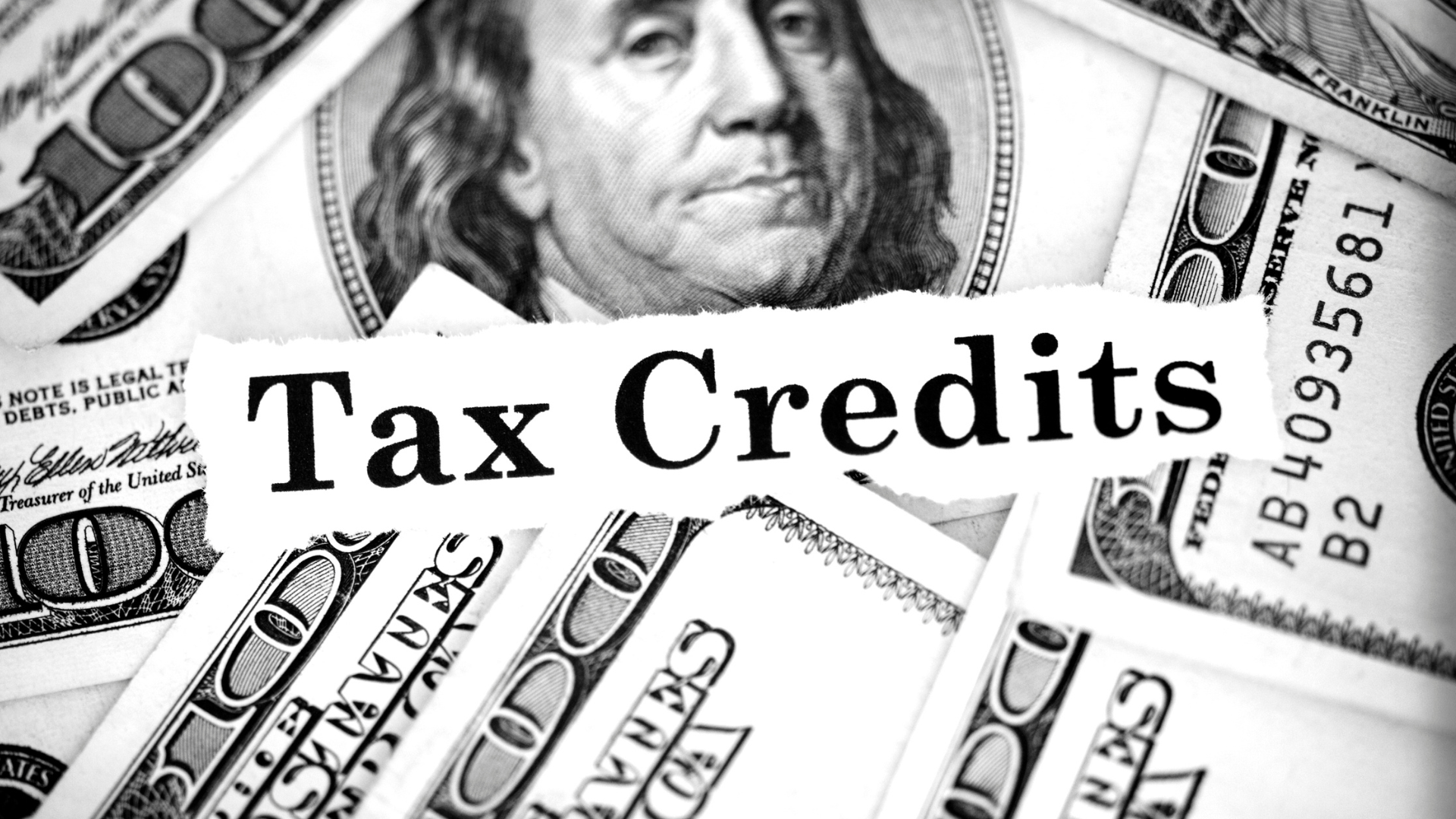You Likely Qualify for
the ERC Program!
Even if you got PPP or didn't have a revenue loss, you likely still qualify for up to $26,000 per W2 employee!
Schedule a 10-Minute Call to Learn How You Qualify.
Documents Needed
Below are the common documents that we need most of the time. Do not let this stress you out, we will help you find and gather everything that you need to get your tax refund.
Document
Years Required
Accepted Format
Quarterly Revenue
2019 - 2020 - 2021

Payroll Report with EVERY PAYCHECK including employee name, check numbers (if applicable), gross wages for each check and all check dates.
2019 - 2020 - 2021

941 Payroll Tax Documents
2019 - 2020 - 2021

PPP Forgiveness and Application Documents
2019 - 2020 - 2021

Let's Talk!
If your business was operating during the pandemic,
you most likely qualify for the ERC.
Thousands of businesses have received up to $26,000 per employee from COVID-19 relief funds through the ERC. Most businesses qualify.
This is time-sensitive. If your filing is received after the deadline, it will not be accepted, and your business credit will not be available. Get the best price in the market here or we will price-match it.
We get paid when you get paid.
Qualifying Questionnaire
We will get back to you as soon as possible.
Please try again later.
We will get back to you as soon as possible.
Please try again later.
Documents Needed
The documents we will need to file your claim vary depending on your situation. Below are the common documents that we need most of the time. Do not let this stress you out, we will help you find and gather everything that you need to get your tax refund.
Quarterly Revenue
2019 - 2020 - 2021

Payroll History Documents
2019 - 2020 - 2021

Payroll Tax Documents
2019 - 2020 - 2021

PPP Documents
2019 - 2020 - 2021

Let's Make It Clear
-
What is the ERC?
The Federal government established the Employee Retention Credit (ERC) in 2020, at the start of the pandemic, to help employers offset the cost of keeping their staff employed. Unfortunately, many business owners have not benefited from this refundable tax credit due to misinformation, lack of guidance, or lack of understanding.
Others have missed out simply because they did not have the time to figure out how to qualify and file the paperwork. No business can afford to leave money on the table, and even though the tax credit period has ended, the IRS still allows businesses to claim it retroactively.
The ERC stimulus money has some eligibility requirements and businesses owe it to themselves to determine if their company qualifies for money from ERC refunds.
-
How much does your filing service cost?
We only get paid for our work if you get paid. It's that simple.
-
How does the ERC tax credit work?
The ERC tax credit is a refundable amount of tax credit money based on a company’s paid wages for 2020 and 2021. Eligibility guidelines exist for business types and wages that qualify. Since the tax credit has expired, companies need to go back and amend their 2020 and 2021 tax returns, complete the required paperwork, and submit these items to the IRS to claim their credit.
-
How do I apply for Employee Retention Credit?
The first step in applying for the ERTC tax credit is to see if your business and the type of wages paid to meet the necessary qualifications. The process involves reading through over 170 pages of documentation, amending tax returns, and filling out several government forms with precise information. The best way to apply is to work with a firm that offers ERC tax filing facilitation services. The staff will guide you through the entire process, and you will benefit from the knowledge they have acquired from completing the applications for many other businesses besides yours.
-
What is the IRS ERC processing time?
Applications were initially processed within two to three months, although the timeframe has now slowed to six to eight months. The sooner companies apply, the better their chance of receiving the tax credit. The ERTC deadline is driven by the IRS rules on how long taxpayers have to amend previously filed tax returns. Companies have three years to amend their tax returns after the date they initially filed them with the IRS.
-
What is the ERC interaction with PPP?
Expenses eligible for the Employee Retention Credit (ERC) can also be claimed under the Paycheck Protection Program (PPP). However, it's essential not to commingle ERC and PPP data. For instance, wages used to calculate the ERC cannot also be used to calculate a PPP loan forgiveness. Employers who pay their employees $10,000 a week can claim $5,000 as part of the ERC and still receive forgiveness of $5,000 of the remaining $10,000.
-
Can I still apply for employee retention credit in 2022?
Fortunately, the Employee Retention Tax Credit can be claimed retroactively. In these still challenging times, employers can file for the ERC refund retroactively to offset the costs of retaining their employees. The ERTC deadline was extended until 2024.
-
What is the risk surrounding the ERC?
The main risk surrounding the ERC is that it is still difficult for businesses to prove that they fall into the safe harbor of a partial suspension of operations of at least 10%. There is no clear guidance from the IRS on what documentation is required to prove eligibility. Therefore, businesses could incur significant costs in obtaining the necessary documentation, only to find out that they don't qualify. In addition, refunds and amended 941X forms can take up to nine months to process, which could interfere with cash flow for businesses relying on the credit to survive.
-
Why Are Some Businesses Having Trouble Understanding the ERC?
The ERC program was created in early 2020 and subsequently updated, changed, and expanded a few times over the next two years through new acts passed by Congress. As a result, many businesses have disqualified themselves under the complexity of these changes. The application process requires an ERC credit report with specific business data supplied by eligible business owners.
Due to the changes and multiple updates, applicants must read through more than 170 pages of government documentation filled with tax and legal jargon. Sending in the wrong paperwork, or filling it in incorrectly, has created lengthy delays in receiving the credit, if at all.
The ERC credit is refundable, meaning that companies receive it, even if it is larger than the taxes they paid. Some employers could even see a negative tax liability due to the credit. The IRS allows companies to go back three years and amend their payroll tax returns to take advantage of this credit.
The ERC has evolved over time: details of the ERC tax credit changed throughout 2020 and 2021 due to acts passed by Congress.
MARCH 2020
-
CARES ACT
In 2020, at the beginning of the pandemic, Congress signed the Coronavirus Aid, Relief, and Economic Security Act (CARES Act) into law. This legislation, becoming law on March 27, 2020, laid the groundwork to implement the ERC with its qualifications for businesses to apply. It also set the amount of credit that companies were entitled to receive. The refundable payroll tax credit was provided to encourage employers to keep as many employees on the payroll as possible during the challenging pandemic period.
The tax credit allowed employers to receive a 50% tax credit of up to $10,000 in paid wages. The Act stipulated that businesses must meet eligibility requirements and have been impacted by COVID-19 to claim the credit.
Even if employers received funds from the initial SBA-backed Payroll Protection Program (PPP), they could still claim the tax credit. The initial plan covered wages paid between March 13, 2020, and December 31, 2020.
DECEMBER 2020
-
CONSOLIDATED APPROPRIATIONS ACT
The CAA, or Consolidated Appropriations Act, expanded the amount of tax credit money employers could receive and extended the credit to include wages paid before July 1, 2021. Qualified employers, including those who received PPP funds, could now claim the tax credit for up to $7,000 per employee per quarter.
MARCH 2021
-
AMERICAN RESCUE PLAN ACT
The American Rescue Plan Act was the next extension of federal benefits for employers and was signed into law on March 11, 2021. In addition to providing the credit for wages paid in 2020 and the first two quarters of 2021, ARPA extended the credit to cover Q3 and Q4 of 2021. The credit covers all wages paid up to December 31, 2021.
The ARPA also added a provision for “Recovery Startup Businesses.” This term means small businesses that launched new offerings after February 15, 2020. These employers can claim up to $7,000 per employee per quarter through December 31, 2021. Recovery businesses were not included in the program termination that covered most other eligible businesses, as covered in the subsequent Infrastructure and Investment and Jobs Act.
NOVEMBER 2021
-
BUILD BACK BETTER ACT
Congress attempted to pass the Build Back Better Act, but it was held up and eventually scaled back. Instead, the Infrastructure Investment and Jobs Act (IIJA) was passed and signed into law in November 2021. The IIJA retroactively terminated the ERC for most businesses after September 30, 2021.
The Build Back Better Act was ultimately replaced by the Inflation Reduction Act of 2022, which excluded any new expansion or extension of the ERC.
-
Why Are Some Businesses Having Trouble Understanding the Erc?
The ERC program was created in early 2020 and subsequently updated, changed, and expanded a few times over the next two years through new acts passed by Congress. As a result, many businesses have disqualified themselves under the complexity of these changes. The application process requires an ERC credit report with specific business data supplied by eligible business owners.
Due to the changes and multiple updates, applicants must read through more than 170 pages of government documentation filled with tax and legal jargon. Sending in the wrong paperwork, or filling it in incorrectly, has created lengthy delays in receiving the credit, if at all.
The ERC credit is refundable, meaning that companies receive it, even if it is larger than the taxes they paid. Some employers could even see a negative tax liability due to the credit. The IRS allows companies to go back three years and amend their payroll tax returns to take advantage of this credit.
The ERC has evolved over time: details of the ERC tax credit changed throughout 2020 and 2021 due to acts passed by Congress.
MARCH 2020
-
CARES ACT
In 2020, at the beginning of the pandemic, Congress signed the Coronavirus Aid, Relief, and Economic Security Act (CARES Act) into law. This legislation, becoming law on March 27, 2020, laid the groundwork to implement the ERC with its qualifications for businesses to apply. It also set the amount of credit that companies were entitled to receive. The refundable payroll tax credit was provided to encourage employers to keep as many employees on the payroll as possible during the challenging pandemic period.
The tax credit allowed employers to receive a 50% tax credit of up to $10,000 in paid wages. The Act stipulated that businesses must meet eligibility requirements and have been impacted by COVID-19 to claim the credit.
Even if employers received funds from the initial SBA-backed Payroll Protection Program (PPP), they could still claim the tax credit. The initial plan covered wages paid between March 13, 2020, and December 31, 2020.
DECEMBER 2020
-
CONSOLIDATED APPROPRIATIONS ACT
The CAA, or Consolidated Appropriations Act, expanded the amount of tax credit money employers could receive and extended the credit to include wages paid before July 1, 2021. Qualified employers, including those who received PPP funds, could now claim the tax credit for up to $7,000 per employee per quarter.
MARCH 2021
-
AMERICAN RESCUE PLAN ACT
The American Rescue Plan Act was the next extension of federal benefits for employers and was signed into law on March 11, 2021. In addition to providing the credit for wages paid in 2020 and the first two quarters of 2021, ARPA extended the credit to cover Q3 and Q4 of 2021. The credit covers all wages paid up to December 31, 2021.
The ARPA also added a provision for “Recovery Startup Businesses.” This term means small businesses that launched new offerings after February 15, 2020. These employers can claim up to $7,000 per employee per quarter through December 31, 2021. Recovery businesses were not included in the program termination that covered most other eligible businesses, as covered in the subsequent Infrastructure and Investment and Jobs Act.
NOVEMBER 2021
-
BUILD BACK BETTER ACT
Congress attempted to pass the Build Back Better Act, but it was held up and eventually scaled back. Instead, the Infrastructure Investment and Jobs Act (IIJA) was passed and signed into law in November 2021. The IIJA retroactively terminated the ERC for most businesses after September 30, 2021.
The Build Back Better Act was ultimately replaced by the Inflation Reduction Act of 2022, which excluded any new expansion or extension of the ERC.
-
Why Are Some Businesses Having Trouble Understanding the Erc?
The ERC program was created in early 2020 and subsequently updated, changed, and expanded a few times over the next two years through new acts passed by Congress. As a result, many businesses have disqualified themselves under the complexity of these changes. The application process requires an ERC credit report with specific business data supplied by eligible business owners.
Due to the changes and multiple updates, applicants must read through more than 170 pages of government documentation filled with tax and legal jargon. Sending in the wrong paperwork, or filling it in incorrectly, has created lengthy delays in receiving the credit, if at all.
The ERC credit is refundable, meaning that companies receive it, even if it is larger than the taxes they paid. Some employers could even see a negative tax liability due to the credit. The IRS allows companies to go back three years and amend their payroll tax returns to take advantage of this credit.
The ERC has evolved over time: details of the ERC tax credit changed throughout 2020 and 2021 due to acts passed by Congress.
MARCH 2020
-
CARES ACT
In 2020, at the beginning of the pandemic, Congress signed the Coronavirus Aid, Relief, and Economic Security Act (CARES Act) into law. This legislation, becoming law on March 27, 2020, laid the groundwork to implement the ERC with its qualifications for businesses to apply. It also set the amount of credit that companies were entitled to receive. The refundable payroll tax credit was provided to encourage employers to keep as many employees on the payroll as possible during the challenging pandemic period.
The tax credit allowed employers to receive a 50% tax credit of up to $10,000 in paid wages. The Act stipulated that businesses must meet eligibility requirements and have been impacted by COVID-19 to claim the credit.
Even if employers received funds from the initial SBA-backed Payroll Protection Program (PPP), they could still claim the tax credit. The initial plan covered wages paid between March 13, 2020, and December 31, 2020.
DECEMBER 2020
-
CONSOLIDATED APPROPRIATIONS ACT
The CAA, or Consolidated Appropriations Act, expanded the amount of tax credit money employers could receive and extended the credit to include wages paid before July 1, 2021. Qualified employers, including those who received PPP funds, could now claim the tax credit for up to $7,000 per employee per quarter.
MARCH 2021
-
AMERICAN RESCUE PLAN ACT
The American Rescue Plan Act was the next extension of federal benefits for employers and was signed into law on March 11, 2021. In addition to providing the credit for wages paid in 2020 and the first two quarters of 2021, ARPA extended the credit to cover Q3 and Q4 of 2021. The credit covers all wages paid up to December 31, 2021.
The ARPA also added a provision for “Recovery Startup Businesses.” This term means small businesses that launched new offerings after February 15, 2020. These employers can claim up to $7,000 per employee per quarter through December 31, 2021. Recovery businesses were not included in the program termination that covered most other eligible businesses, as covered in the subsequent Infrastructure and Investment and Jobs Act.
NOVEMBER 2021
-
BUILD BACK BETTER ACT
Congress attempted to pass the Build Back Better Act, but it was held up and eventually scaled back. Instead, the Infrastructure Investment and Jobs Act (IIJA) was passed and signed into law in November 2021. The IIJA retroactively terminated the ERC for most businesses after September 30, 2021.
The Build Back Better Act was ultimately replaced by the Inflation Reduction Act of 2022, which excluded any new expansion or extension of the ERC.
IRS Resources
Check Out Our Blog



BEST PRICE, BEST SERVICE
NAVIGATION
Nothing in this application is written as specific tax or investment advice unless explicitly identified. We do not represent tax incentives or opinions. We will only contact you regarding financial matters in good faith and in compliance with all known laws. ERC Guy staff will not compensate for losses or aid to avoid taxes or penalties. You can't. We advise only on issues that actively assist our clients in formulating a statement or amended statement, and use of our communications as precedent, opinion, refuge, or advice on other related or unrelated matters. cannot be trusted.